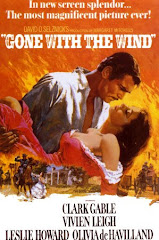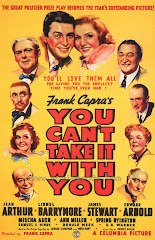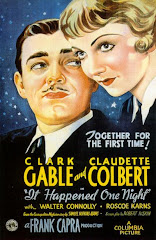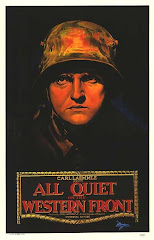Director: Michael Anderson
Cast: David Niven, Cantinflas, Shirley MacLaine, plus an enormous list of cameos
Genre: Drama, Adventure
Other Nominees: Friendly Persuasion, Giant, The King and I, The Ten Commandments
Genre: Drama, Adventure
Other Nominees: Friendly Persuasion, Giant, The King and I, The Ten Commandments
Around The World in 80 Days is an interesting movie. By today’s standards it seems slow, drawn out, and just not very exciting. With a runtime of close to three hours, an incredible portion of this film rolls by without any dialogue whatsoever. Whether we are on the back of an elephant that saunters through the Indian jungle, or on a steamship looking out at a Pacific sunset, there are many scenes where the setting is the main character on screen and the characters themselves have very little to do.
The film opens with a very unusual sequence. At first I had mistakenly thought I had started a special feature on the DVD and was accidently watching a documentary about the Jules Verne novel upon which the film is based. Upon returning to the menu of the DVD I realized that I was indeed watching the opening scene of the film and continued on with the show. The narrator of this documentary explains to us that, despite the fact that today (1956) a man can journey around the world in 80 hours, back in the late 19th Century when Jules Verne penned the book the feat of circumnavigating the world in 80 days was a daring and impressive one. Not only was I confused regarding the use of this documentary to open the movie, but I soon wondered why a movie would go out of its way to point out that what we are about to see will not seem that impressive. That seems a bit negative. Then, just as I am pondering this, the narrator and documentary suddenly disappear and we find ourselves on the streets of 19th Century London.
The sets in this film are varied and stunning. The recreation of 19th Century London is breathtaking in its detail and all the more impressive knowing that most of the movie takes place elsewhere. The vast number of cities, cultures, and environments that our hero moves through are each one recreated in extreme detail. From bullfighting in Spain, travelling the Suez Canal, a journey through the Indian jungle, Calcutta, Hong Kong, San Francisco, a train ride through the Wild West; probably the best thing about this film is the fact that you genuinely feel like you are getting a world tour as you journey with the cast.
When he has something to do on screen, David Niven plays Phileas Fogg, the epitome of an English Gentleman. Phileas accepts a challenge from his peers to leave London that very evening and journey around the world in 80 days. David Niven has been quoted as saying that this was his most enjoyable role and while there is no doubt that he looks comfortable playing the English gentleman, I cannot wonder if it was his most enjoyable role because of all the travelling involved! The best scenes involving Mr. Fogg show us a refined Englishman maintaining his composure and routine amidst increasingly unfamiliar and strange environments. There is a lot of humor to be found in seeing him relaxed, enjoying his ritual cup of tea on the deck of a ship while a tempest rages around him, or to watch him almost nonchalantly react to scenes of human sacrifice or rampaging Indian braves attacking his train. He reacts to these events, but it is the restrained reaction of a gentleman, and not the excitable reaction of an action hero. Mr. Fogg is not an adventurer and does little to stir the passions of those around him. He is a man dedicated to punctuality and routine and there is a lot of comedy to be found in David Niven’s portrayal of that.
Accompanying Fogg on his journey is his valet Passepartout, played by the Mexican actor Cantinflas. Passepartout is not really a devoted servant to Fogg, having only been taken into service right before the adventure begins. But Passepartout appears to go along with the challenge for the experience of seeing as many females from as many parts of the globe as possible, than for any other reason. While in India, the two join forces with an Indian princess played by Shirley MacLaine. For me, Princess Aouda is the weakest character in the film with her attraction towards Fogg having no real chemistry or explanation. The lack of chemistry is understandable given the emotionless character of the man she is falling for, but the “love scenes” appear to be more and more random as the movie progresses and I found them to be more and more inexplicable and frustrating as time went by.
We cannot talk about the cast of Around The World in 80 Days without discussing the enormous list of cameos that appear onscreen. A full list of the appearances can be found at the link below but there is no doubt that it represents an enormous portion of 1950’s Hollywood. I wonder if this fact alone was a major reason in the movie being so popular.
Whatever the impact that the list of cameos had on its popularity, this film was as much about the locations and visuals as the actors involved. The movie has become known for being a celebration of Technicolor. And although it falls in the same year as two other renowned color spectacles in The King and I and The Ten Commandments, the combination of the Technicolor spectacle along with the thorough representation of Hollywood stars of the day may have guaranteed its victory. Today, I would recommend this film to cinematography students but not so much to anyone else.
Next up: The Bridge on the River Kwai


















































